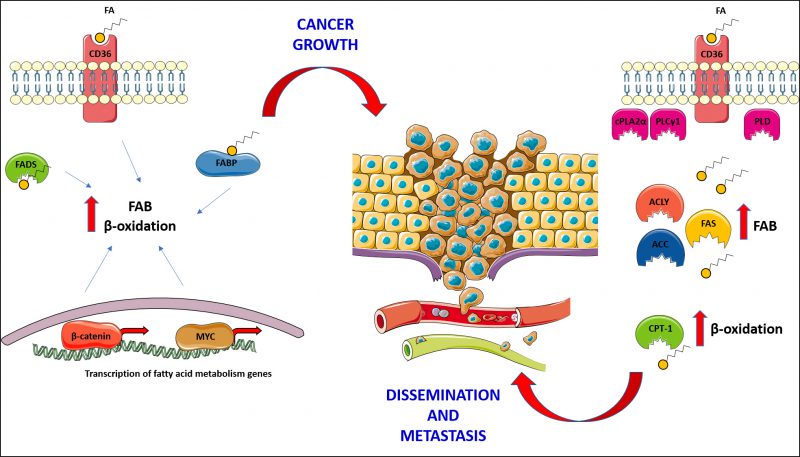Back to article: Fatty acids - from energy substrates to key regulators of cell survival, proliferation and effector function
FIGURE 2: Cancer cells rely upon fatty acids (FA) for proliferation, survival and metastasis, and utilise them for the production of energy and membrane maintenance; consequently, both fatty acid biosynthesis (FAB) and β-oxidation are found increased in many cancers. The expression of CD36 and fatty acid binding proteins (FABP) has been associated with cancer growth. The activity of fatty acyl-CoA desaturases (FADS) sustains FAB, promoting cancer growth and survival. As shown on the left side of the figure, some cancers put in place a transcriptional programme, governed by master regulators such as MYC and β-catenin, in order to boost the activity of FAB and β-oxidation and, generally, utilisation of fatty acids, supporting cancer growth. Finally, on the right side of the figure how cancer cells utilise fatty acids to support their migration and growth in secondary sites is shown; in this context, the expression of CD36 is central for the dissemination of cancer cells from the primary tumour and the establishment and growth of metastasis. The activity of enzymes involved in phospholipid hydrolysis (Phospholipase D – PLD; cytosolic phospholipase A2α – cPLA2α; phospholipase Cγ1 – PLCγ1), in fatty acid biosynthesis (ATP citrate lyase – ACLY; acetyl-CoA carboxylase – ACC; fatty acid synthase – FAS) and in their catabolism (Carnitine palmitoyl transferase 1 – CPT-1), has been proven fundamental for dissemination and metastasis establishment.

